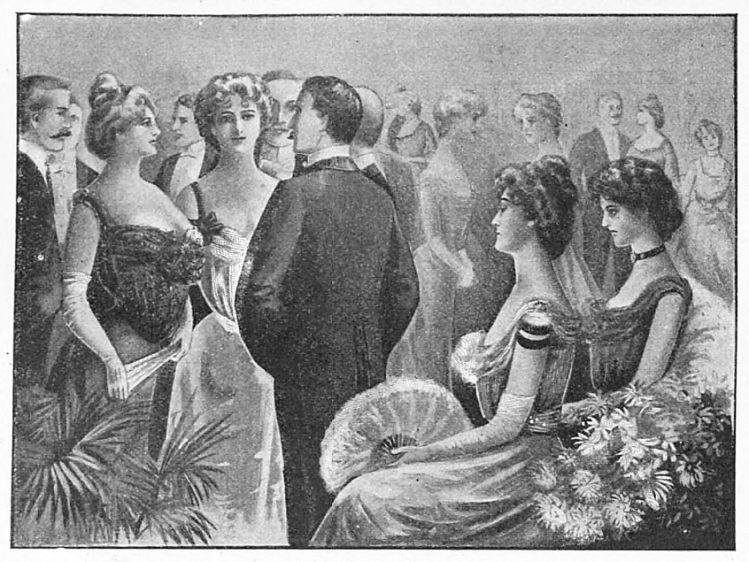The noun wallflower designates a plant of the genus Cheiranthus, especially Cheiranthus cheiri, growing wild on old walls, on rocks, in quarries, etc., and cultivated in gardens for its fragrant flowers.
This noun is used figuratively to designate a shy or excluded person at a dance or party, especially a girl without a partner.
The French equivalent is faire tapisserie, meaning to do (i.e., to serve as) tapestry.
In English as well as in French, the allusion is to the fact that the person keeps their seat at the side of a room during dancing or partying.
The noun wallflower is first recorded in its figurative acceptation in The County Ball, by the English poet and politician Winthrop Mackworth Praed (1802-1839). This poem was first published in No. VI (April 1821) of The Etonian, the journal of Eton, a public school near Windsor, in Berkshire, southern England; it was reprinted in Volume II of the Second Edition (London: Henry Colburn and Co.; Windsor: Knight and Dredge – 1822) of The Etonian:
The County Member, bright Sir Paul,
Is Primo Buffo at the Ball.Since first he longed to represent
His fellow-men in Parliament,
Courted the coblers [sic] and their spouses,
And sought his honours in mud-houses,
Full thirty springs have come and fled;
And though from off his shining head
The twin-destroyers, Time and Care,
Begin to pluck its fading hair,
Yet where it grew, and where it grows,
Lie powder’s never-varying snows,
And hide the havoc years have made
In kind monotony of shade.Sir Paul is young in all but years;
And when his courteous face appears,
The maiden wall-flowers of the room
Admire the freshness of his bloom,
Hint that his face has made him vain,
And vow “he grows a boy again;”
And giddy girls of gay fifteen
Mimic his manner and his mien.
The French phrase faire tapisserie is first recorded in La Manie de briller* (Paris: Martinet, 1806), a comedy by the French actor, playwright and novelist Louis Benoît Picard (1769-1828):
Madame Bourville. J’ai des préparatifs à faire pour le bal de ce soir ; je ne danse plus guère depuis que j’ai pris de l’embonpoint ; mais encore ne faut-il pas se mettre comme celles qui ne vont au bal que pour faire tapisserie.
translation:
Madame Bourville. I have preparations to make for tonight’s ball; I’ve scarcely ever danced since I grew stout; yet, even then, I must not dress like those women who go to the ball only to be wallflowers.
(* The title La Manie de briller translates as The Mania for shining, i.e., for shining in company, for standing out from the crowd.)
The following text and illustration, in which the two women sitting on the right-hand side are ‘wallflowers’, are from an advertisement for a breast-enlargement treatment, published in The Sketch (London, England) of 25th February 1903:
At a reception or dance who are the wall-flowers? Those who through neglect or sickness are thin and angular, with flat and sunken places in the form frightening away admirers. And at these same dances who is it whose programme is always filled, near whom there is always a circle of men? The woman of plump, well-rounded figure—whose bust is as nature intended it should be.


Great research. Thanks.
LikeLike
Thank you!
LikeLike